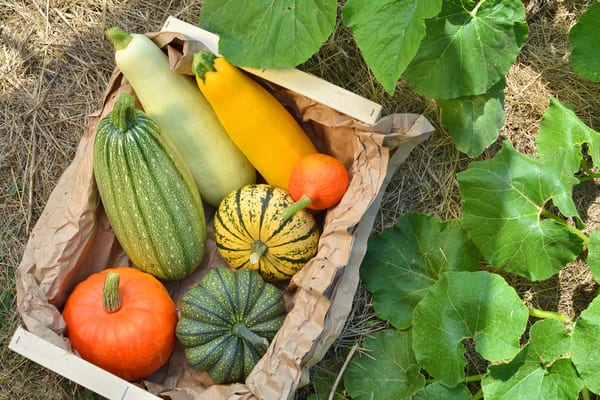Fall is here, with its delicious foods and flavors. Cinnamon, apple varieties, Brussels sprouts, beets, potatoes, turnips and parsnips will be abundant on tables and trending in recipes. And the star of many a produce stand will be a colorful assortment of winter squash — including butternut, acorn, spaghetti and turban.
Though more varieties of winter squash are becoming more widely available, there are facts about these gourds that many cooks and diners don’t know, and that should be taken into consideration when preparing and consuming winter squash.
While most people consider it a vegetable, a squash is botanically a fruit, because it produces seeds. Most varieties originate from the Andes, with some native to Africa. Summer squash, despite the name, is generally available year-round; varieties include zucchini, yellow, pattypan and crookneck. Common winter squash, such as butternut and spaghetti, are also available year-round, but other varieties, such as turban and fairytale, typically peak November to December.
Did you know? With summer squash, and some winter squash, the entire plant can be eaten — meat, skin, seeds, vines and flowers.
Often, cooks and diners assume everything about winter squash is healthy because we think of it as a vegetable. Although there are many nutritional benefits in winter squashes, such as vitamins A and C and fiber, winter squashes, along with corn, potatoes and peas, are starchy vegetables. That means that, calorically, many are more similar to grains than to vegetables, and their carbohydrate content can be much higher than vegetables. Butternut, acorn and pumpkin squash are calorically similar to a starch, for example, while spaghetti and kabocha are calorically closer to a vegetable.
Before you recoil in terror and vow never again to let that darn starch touch your lips, a cup of steamed broccoli has 25 calories and five grams of carbohydrates, and a cup of spaghetti squash has only 30 calories and seven grams of carbs. No big dif. But to be completely honest, a cup of steamed butternut squash does have 85 calories and 20 grams of carbohydrates. That is a significant difference. So if you’re a diner watching your calorie and carb counts because you’re trying to control your weight or blood sugar, you should treat some winter squashes as a starch.
If you’re watching your calories, sugars and carbs, it’s really most important to pay attention to how squashes are cooked. Avoid the traditional fall recipes that load them with butter and brown sugar; those add calories and negate some of the nutritional benefits. Instead, steam or roast to avoid adding extra calories (roasting will naturally sweeten squash), and season with cinnamon, pepper, nutmeg and sage. Also consider taking advantage of the fiber by using varieties with edible skin. (Remember to wash the skin before cooking if you’re planning to eat it.)
Planning to squash up your life? Google some recipes. Experiment with new flavors and textures, and use this seasonal food as a replacement for starches such as rice, pasta and potatoes.
—
Photo Credit: Studio Barcelona / Shutterstock.com
